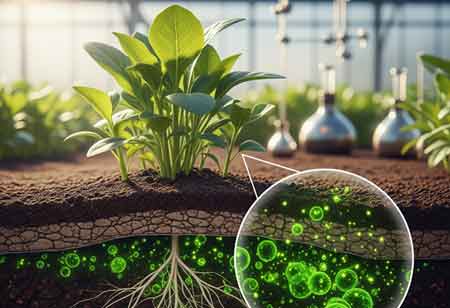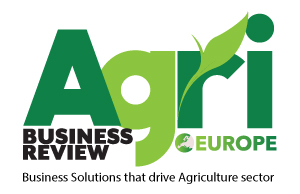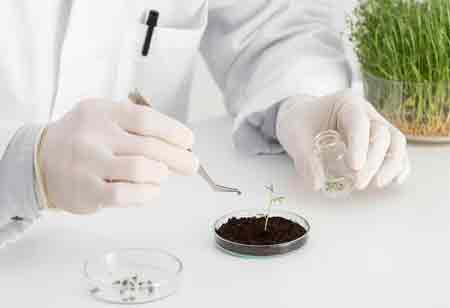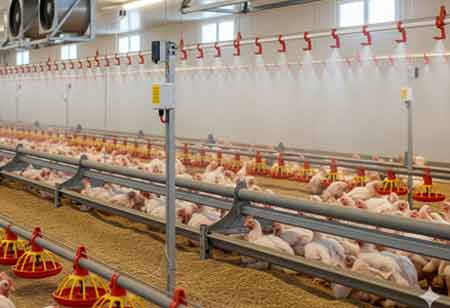Thank you for Subscribing to Agri Business Review Weekly Brief
Harnessing Microalgae for a Sustainable Soil Revolution
Microalgae provide sustainable agricultural solutions by improving soil health, reducing dependence on synthetic fertilizers, and enhancing crop yields and resilience in the face of environmental challenges.

By
Agri Business Review | Thursday, November 06, 2025
Stay ahead of the industry with exclusive feature stories on the top companies, expert insights and the latest news delivered straight to your inbox. Subscribe today.
Fremont, CA: The global food system is under increasing strain. Intensive farming, dependent on synthetic fertilizers, has caused widespread soil degradation, nutrient runoff, and biodiversity loss. Facing the twin challenges of feeding a growing population while safeguarding the environment, microalgae—microscopic photosynthetic powerhouses—are emerging as a transformative solution for sustainable agriculture, food security, and renewable energy.
Microalgae: A Multifaceted Solution for Soil Health
Microalgae are not a singular solution but rather a versatile and sustainable tool that offers multiple benefits for the soil ecosystem. In agriculture, they are commonly applied as biofertilizers, biostimulants, or biopesticides, addressing the underlying causes of soil degradation rather than merely alleviating its symptoms. Functioning as a “nutrient factory,” microalgae are rich in essential macro- and micronutrients, including nitrogen (N), phosphorus (P), potassium (K), and trace elements, making their biomass an effective natural, slow-release fertilizer. Particular species, particularly cyanobacteria, possess the unique ability to fix atmospheric nitrogen (N₂) and convert it into plant-available ammonia (NH₃), offering a sustainable alternative to energy-intensive synthetic fertilizers. In addition, microalgae contribute to nutrient cycling by releasing organic acids that solubilize bound phosphorus, thereby enhancing nutrient bioavailability. Beyond their nutritional contributions, microalgae serve as “soil architects,” improving soil structure and resilience. Through the accumulation and decomposition of their biomass, they enrich the soil with organic matter, enhancing aggregation, porosity, and aeration. Moreover, the polysaccharides and organic matter they produce act as natural sponges, significantly improving the soil’s water-holding capacity, a benefit particularly vital in drought-prone regions. Acting as both biostimulants and bioprotectants, microalgae further promote plant growth and stress tolerance. They synthesize phytohormones such as auxins, gibberellins, and cytokinins, which stimulate root development, cell division, and overall plant vigor. Their production of antioxidants and bioactive compounds enhances crop resilience to abiotic stresses like drought, salinity, and temperature extremes, while also suppressing specific pathogens and pests.
A New Model: Reducing Chemical Dependency and Boosting Yields
The integration of microalgae into farming practices offers a clear path toward reducing reliance on synthetic chemicals. By providing a natural source of nutrients, enhancing soil health, and stimulating plant growth, microalgae biofertilizers can be used to either wholly or partially replace conventional fertilizers and pesticides.
While the potential of microalgae is immense, realizing its widespread adoption will require sustained research and development. Critical areas of focus include advancing scalable production techniques to enable cost-effective, large-scale cultivation; refining application methods to optimize formulations for diverse crops and soil types; and improving strain selection by identifying and utilizing the most effective microalgae varieties tailored to specific agricultural needs.
The transition from laboratory curiosity to an agricultural staple is currently underway. The global market of microalgae-derived farm products is expanding, propelled by the escalating demand for sustainable and organic foodstuffs. Contemplating agriculture’s trajectory, the symbiotic relationship between microalgae and soil envisions a future cultivating both crops and the land’s intrinsic health and fertility.





